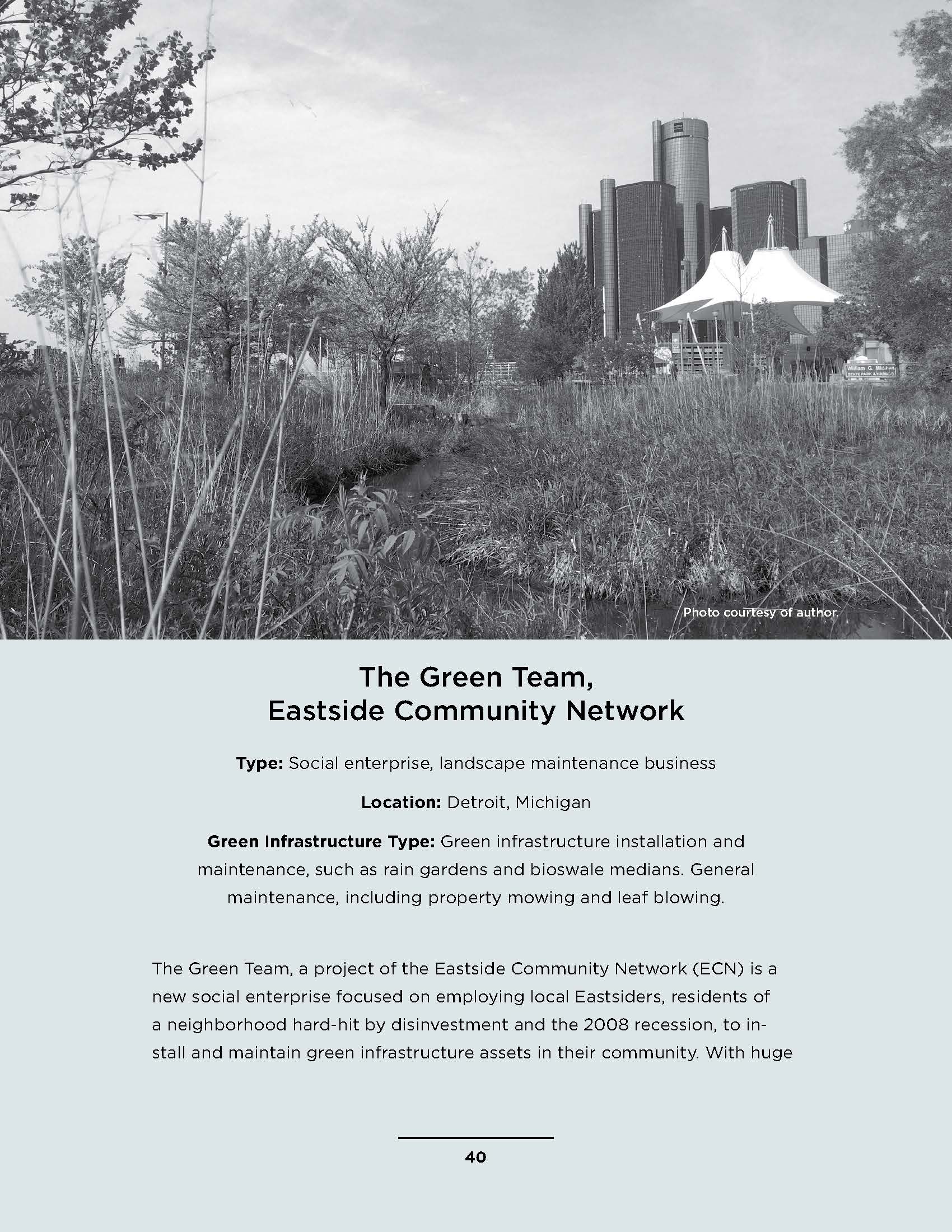Creating climate-resilient cities takes more than a series of infrastructure investments; more than sea walls and permeable pavement. It takes investment in people. Those most vulnerable to the effects of climate change are those without living wages or access to political power—very often communities of color. As the seas continue to rise, climate resiliency strategies need to not only build the infrastructure but also tackle the underlying reasons why those who bear the disproportionate burden of climate change are those with the least ability to recover. Doing so means applying a framework of community wealth building to climate resiliency planning—a vibrant place-based economic system where democratic ownership and control creates more equitable and inclusive outcomes.
Cities have recently integrated more green infrastructure strategies into their climate resiliency planning, which could be a key intervention point for applying the concept of community wealth building in practice. Harnessing nature’s innate ability to manage water, green infrastructure captures and diverts stormwater before it reaches the sewer system through a strategically planned network of natural features, such as vegetation and soil. While green infrastructure’s primary function is to limit stormwater runoff, its benefits, like more walkable communities and cleaner air, also have the potential to facilitate healthier, more prosperous communities—if done so intentionally.
In particular, a buildout of green infrastructure projects could create new opportunities for social enterprises, mission-driven nonprofits with a fee-for-service component, and worker cooperatives, democratically owned-and-operated businesses, to thrive. Both social enterprises and worker cooperatives are community-based enterprises that go beyond making a profit and can play a critical role in building community wealth. Green infrastructure’s decentralized nature, relying upon projects of varying size that need continual tending and maintenance, creates access points for smaller firms and opens up a space to experiment with business models focused on providing community ownership and control.
This report investigates the state of worker cooperatives and social enterprises in the green infrastructure field in order to understand the possibilities and strategies for these community wealth building enterprises to seize the opportunity to provide positive jobs in their communities. It focuses on four case studies of enterprises already operating in the field in a variety of economic and environmental contexts. It provides practical insights to practitioners as well as local governments and anchor institutions—large, place based nonprofits like universities and hospitals—to deepen and expand community wealth building enterprises.
This Oakland-based cooperative is working to redefine what it means to work in the construction sector as it works to make the city more climate-resilient.
A social enterprise in Detroit is harnessing the city's vacant land to create job opportunities and community benefits for marginalized residents.
In Pittsburgh, a social enterprise is providing returning citizens and low-income community residents specialized green infrastructure training.
Working in the predominately Latinx community of Cully in Portland, Verde acts to make the benefits of green infrastructure available to all.




